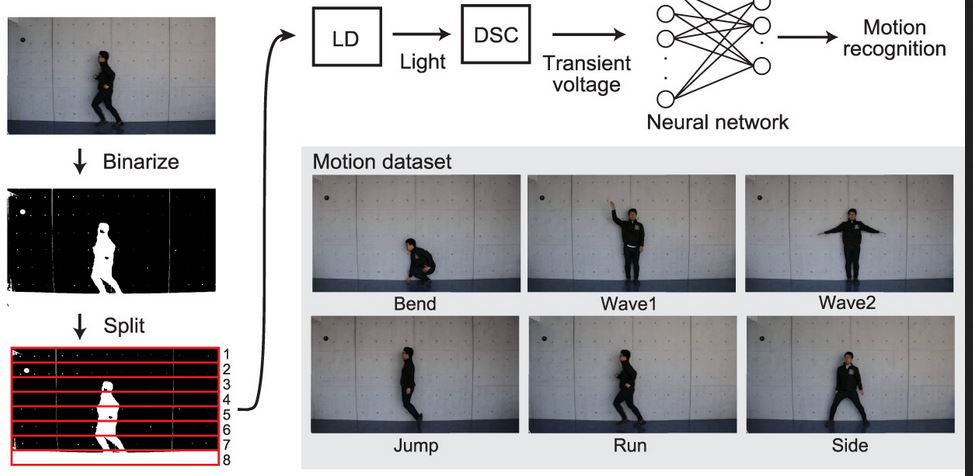Scientists from the Tokyo University of Science have fabricated a self-powered, dye-sensitized solar cell-based device that mimics human synaptic behavior for edge AI processing.
The research paper “Self-Powered Dye-Sensitized Solar-Cell-Based Synaptic Devices for Multi-Scale Time-Series Data Processing in Physical Reservoir Computing,” available in the journal ACS Applied Materials & Interfaces, explains that physical reservoir computing (RPC) using synaptic devices is a promising edge AI device for use in the prediction of emergency events such as heart attacks, natural disasters and pipeline failures.
The study details how the scientists fabricated a dye-sensitized solar-cell-based synaptic device with controllable time constants by changing the light intensity. “In order to process time-series input optical data with various time scales, it is essential to fabricate devices according to the desired time scale,” said Takashi Ikuno, one of the research leads. “Inspired by the afterimage phenomenon of the eye, we came up with a novel optoelectronic human synaptic device that can serve as a computational framework for power-saving edge AI optical sensors.”
The device utilizes squarylium derivative-based dyes and incorporates optical input, AI computation, analog output and power supply functions at the material level. It showed synaptic features, such as paired-pulse facilitation and paired-pulse depression, in response to light intensity
When the device was used as the reservoir layer of PRC, it classified human movements such as bending, jumping, running and walking with over 90% accuracy. The scientists found the performance of a time-processing task was achieved by changing the light intensity, even when the input pulse width was varied.
The solar cell meant its power consumption was 1% of that required by conventional systems. “We have demonstrated for the first time in the world that the developed device can operate with very low power consumption and yet identify human motion with a high accuracy rate,” Ikuno said, noting that the proposed innovation could revolutionize low-power AI applications in health monitoring, surveillance and automotive technologies.
“This invention can be used as a massively popular edge AI optical sensor that can be attached to any object or person, and can impact the cost involved in power consumption, such as car-mounted cameras and car-mounted computers,” Ikuno explained. “This device can function as a sensor that can identify human movement with low power consumption, and thus has the potential to contribute to the improvement of vehicle power consumption.”
The system could also be used as a low-power consumption optical sensor in stand-alone smartwatches and medical devices, significantly reducing their costs to be comparable or even lower than that of current medical devices.
This content is protected by copyright and may not be reused. If you want to cooperate with us and would like to reuse some of our content, please contact: editors@pv-magazine.com.




By submitting this form you agree to pv magazine using your data for the purposes of publishing your comment.
Your personal data will only be disclosed or otherwise transmitted to third parties for the purposes of spam filtering or if this is necessary for technical maintenance of the website. Any other transfer to third parties will not take place unless this is justified on the basis of applicable data protection regulations or if pv magazine is legally obliged to do so.
You may revoke this consent at any time with effect for the future, in which case your personal data will be deleted immediately. Otherwise, your data will be deleted if pv magazine has processed your request or the purpose of data storage is fulfilled.
Further information on data privacy can be found in our Data Protection Policy.